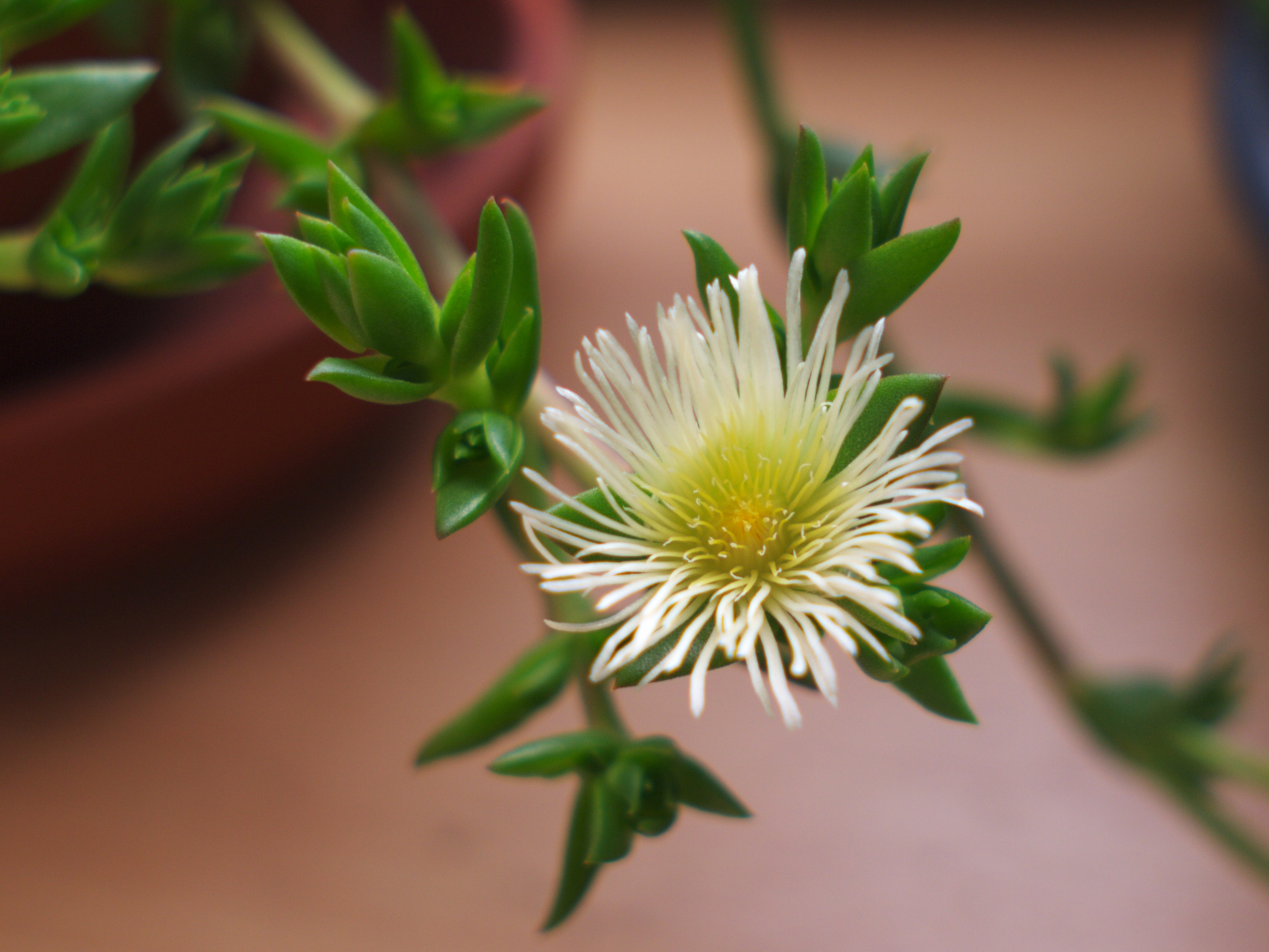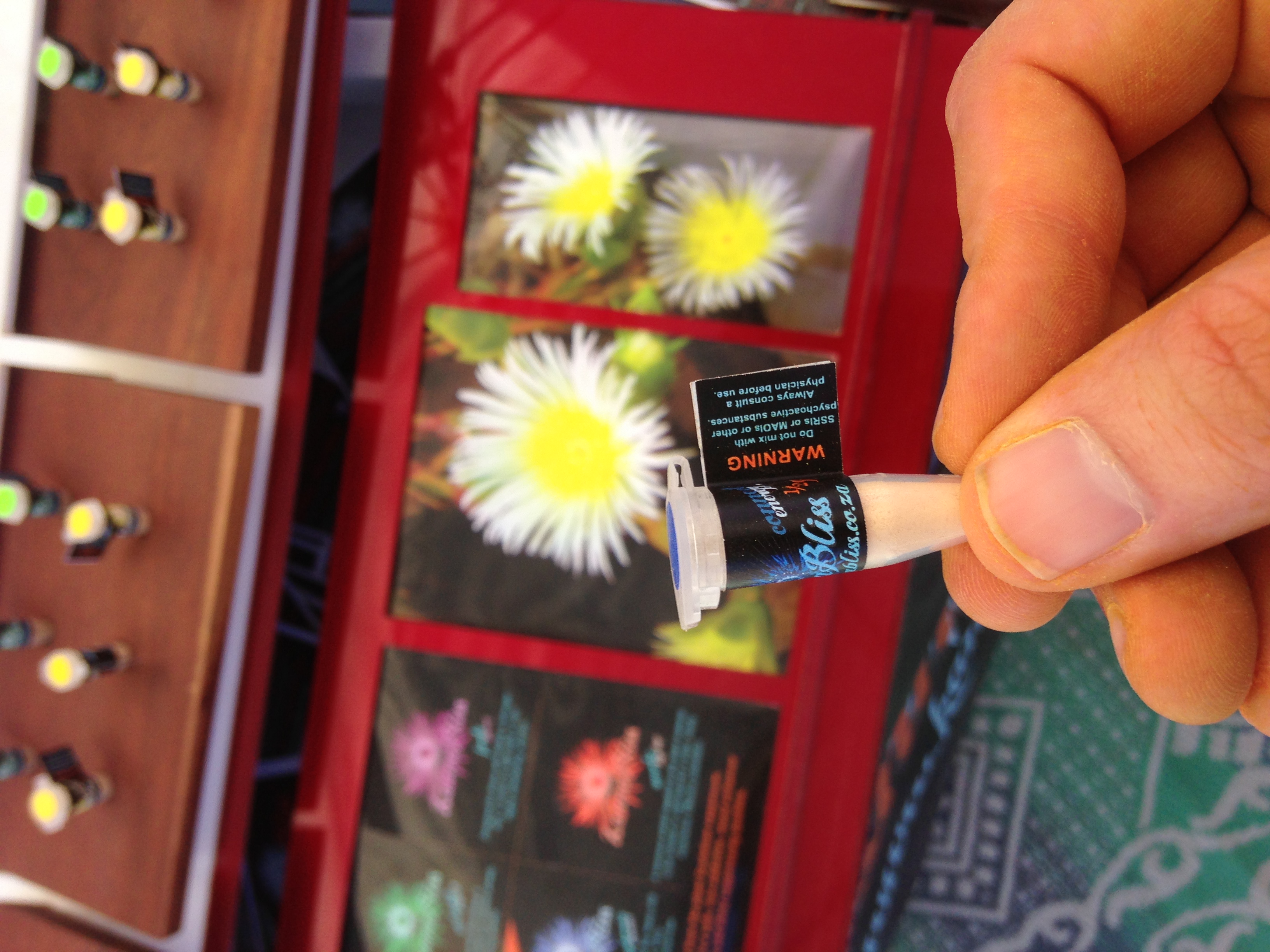Sceletium tortuosum on:
[Wikipedia]
[Google]
[Amazon]
Sceletium tortuosum is a
 The plant has been used by South African pastoralists and
The plant has been used by South African pastoralists and

 ''S. tortuosum'' is traditionally used to fight stress and depression, relieve pain and alleviate hunger.
''S. tortuosum'' has been studied to alleviate excessive nocturnal barking in dogs, or meowing in cats, in pets diagnosed with
''S. tortuosum'' is traditionally used to fight stress and depression, relieve pain and alleviate hunger.
''S. tortuosum'' has been studied to alleviate excessive nocturnal barking in dogs, or meowing in cats, in pets diagnosed with
Monograph on sceletium tortuosum
Erowid Kanna Vault
Kanna Shop
succulent plant
In botany, succulent plants, also known as succulents, are plants with parts that are thickened, fleshy, and engorged, usually to retain water in arid climates or soil conditions. The word ''succulent'' comes from the Latin word ''sucus'', me ...
commonly found in South Africa
South Africa, officially the Republic of South Africa (RSA), is the southernmost country in Africa. It is bounded to the south by of coastline that stretch along the South Atlantic and Indian Oceans; to the north by the neighbouring coun ...
, which is also known as Kanna, Channa, Kougoed (Kauwgoed/ 'kougoed', prepared from 'fermenting' ''S. tortuosum'')—which literally means, 'chew(able) things' or 'something to chew'.
The generally recognised eight ''Sceletium'' species are ''S. crassicaule'', ''S. emarcidum'', ''S. exalatum'', ''S. expansum'', ''S. rigidum'', ''S. strictum'', ''S. tortuosum'' and ''S. varians''. Per Klak et al. (2007), an alternative classification for the ''Sceletium'' group is ''Mesembryanthemum crassicaule'', ''M. emarcidum'', ''M. exalatum'', ''M. expansum'', ''M. archeri'' (''S. rigidum''), ''M. ladismithiense'' (''S. strictum''), ''M. tortuosum'' and ''M. varians''.
History
 The plant has been used by South African pastoralists and
The plant has been used by South African pastoralists and hunter-gatherer
A traditional hunter-gatherer or forager is a human living an ancestrally derived lifestyle in which most or all food is obtained by foraging, that is, by gathering food from local sources, especially edible wild plants but also insects, fung ...
s as a mood-altering substance from prehistoric times. The first known written account of the plant's use was in 1662 by Jan van Riebeeck
Johan Anthoniszoon "Jan" van Riebeeck (21 April 1619 – 18 January 1677) was a Dutch navigator and colonial administrator of the Dutch East India Company.
Life
Early life
Jan van Riebeeck was born in Culemborg, as the son of a surgeon. ...
. The traditionally prepared dried ''Sceletium'' was often chewed and the saliva
Saliva (commonly referred to as spit) is an extracellular fluid produced and secreted by salivary glands in the mouth. In humans, saliva is around 99% water, plus electrolytes, mucus, white blood cells, epithelial cells (from which DNA can ...
swallowed, but it has also been made into gel caps, teas and tincture
A tincture is typically an extract of plant or animal material dissolved in ethanol (ethyl alcohol). Solvent concentrations of 25–60% are common, but may run as high as 90%.Groot Handboek Geneeskrachtige Planten by Geert Verhelst In chemistr ...
s. It has also been used as a snuff and smoked.''
Uses
 ''S. tortuosum'' is traditionally used to fight stress and depression, relieve pain and alleviate hunger.
''S. tortuosum'' has been studied to alleviate excessive nocturnal barking in dogs, or meowing in cats, in pets diagnosed with
''S. tortuosum'' is traditionally used to fight stress and depression, relieve pain and alleviate hunger.
''S. tortuosum'' has been studied to alleviate excessive nocturnal barking in dogs, or meowing in cats, in pets diagnosed with dementia
Dementia is a disorder which manifests as a set of related symptoms, which usually surfaces when the brain is damaged by injury or disease. The symptoms involve progressive impairments in memory, thinking, and behavior, which negatively affe ...
.
Effects
''S. tortuosum'' may elevate mood and decreaseanxiety
Anxiety is an emotion which is characterized by an unpleasant state of inner turmoil and includes feelings of dread over anticipated events. Anxiety is different than fear in that the former is defined as the anticipation of a future threat wh ...
, stress and tension. Intoxicating doses can be euphoric
Euphoria ( ) is the experience (or affect) of pleasure or excitement and intense feelings of well-being and happiness. Certain natural rewards and social activities, such as aerobic exercise, laughter, listening to or making music and da ...
but not hallucinogen
Hallucinogens are a large, diverse class of psychoactive drugs that can produce altered states of consciousness characterized by major alterations in thought, mood, and perception as well as other changes. Most hallucinogens can be categorize ...
ic, contrary to some literature on the subject.
Pharmacology
''S. tortuosum'' contains about 1–1.5% totalalkaloid
Alkaloids are a class of basic, naturally occurring organic compounds that contain at least one nitrogen atom. This group also includes some related compounds with neutral and even weakly acidic properties. Some synthetic compounds of simila ...
s. The alkaloids contained in ''S. tortuosum'' believed to possess psychoactivity include mesembrine, mesembrenone, mesembrenol and tortuosamine. A standardised ethanolic extract of dried ''S. tortuosum'' had an IC50 for SERT of 4.3 μg/ml and for PDE4 inhibition of 8.5 μg/ml.
Kanna is also reported to be an acetylcholinesterase inhibitor
Acetylcholinesterase inhibitors (AChEIs) also often called cholinesterase inhibitors, inhibit the enzyme acetylcholinesterase from breaking down the neurotransmitter acetylcholine into choline and acetate, thereby increasing both the level and ...
and cannabinoid
Cannabinoids () are several structural classes of compounds found in the cannabis plant primarily and most animal organisms (although insects lack such receptors) or as synthetic compounds. The most notable cannabinoid is the phytocannabinoid tet ...
agonist
An agonist is a chemical that activates a receptor to produce a biological response. Receptors are cellular proteins whose activation causes the cell to modify what it is currently doing. In contrast, an antagonist blocks the action of the ag ...
.
Mesembrine
Mesembrine is a major alkaloid present in ''S. tortuosum''. There is about 0.3% mesembrine in the roots and 0.86% in the leaves, stems, and flowers of the plant. It serves as aserotonin reuptake inhibitor
A serotonin reuptake inhibitor (SRI) is a type of drug which acts as a reuptake inhibitor of the neurotransmitter serotonin (5-hydroxytryptamine, or 5-HT) by blocking the action of the serotonin transporter (SERT). This in turn leads to incre ...
with less prominent inhibitory effects on phosphodiesterase 4 At least four types of the enzyme phosphodiesterase 4 (PDE4) are known:
* PDE4A
* PDE4B
* PDE4C
* PDE4D
See also
* 3',5'-cyclic-AMP phosphodiesterase
* Phosphodiesterase
A phosphodiesterase (PDE) is an enzyme that breaks a phosphodiester bond ...
(PDE4). In an in vitro
''In vitro'' (meaning in glass, or ''in the glass'') studies are performed with microorganisms, cells, or biological molecules outside their normal biological context. Colloquially called " test-tube experiments", these studies in biology a ...
study, a high-mesembrine ''Sceletium'' extract showed monoamine releasing activity by upregulation of vesicular monoamine transporter 2
The solute carrier family 18 member 2 (SLC18A2) also known as vesicular monoamine transporter 2 (VMAT2) is a protein that in humans is encoded by the ''SLC18A2'' gene. SLC18A2 is an integral membrane protein that transports monoamines—partic ...
(VMAT2).
Mesembrenone
Mesembrenone on the other hand serves as a more balanced serotonin reuptake inhibitor and PDE4 inhibitor.Safety
General
Traditional and contemporary methods of preparation serve to reduce levels of potentially harmfuloxalate
Oxalate (IUPAC: ethanedioate) is an anion with the formula C2O42−. This dianion is colorless. It occurs naturally, including in some foods. It forms a variety of salts, for example sodium oxalate (Na2C2O4), and several esters such as dimethyl ...
s found in ''S. tortuosum''. An analysis indicated levels of 3.6-5.1% oxalate, which falls within the median range for crop plants, just like spinach or kale. It is speculated that physical crushing of the plant and the fermentation process reduce the potentially harmful effects of oxalic acid
Oxalic acid is an organic acid with the systematic name ethanedioic acid and formula . It is the simplest dicarboxylic acid. It is a white crystalline solid that forms a colorless solution in water. Its name comes from the fact that early invest ...
. In particular, free oxalic acid is likely to complex with cell wall-associated calcium salts and precipitate as calcium oxalate
Calcium oxalate (in archaic terminology, oxalate of lime) is a calcium salt of oxalic acid with the chemical formula . It forms hydrates , where ''n'' varies from 1 to 3. Anhydrous and all hydrated forms are colorless or white. The monohydrate ...
when plant material is crushed.
Animal studies
No treatment-related adverse effects were observed in an oral toxicity study in rats of a standardized hydroethanolic extract of ''S. tortuosum''. The extract, although not mesembrine itself, producedataxia
Ataxia is a neurological sign consisting of lack of voluntary coordination of muscle movements that can include gait abnormality, speech changes, and abnormalities in eye movements. Ataxia is a clinical manifestation indicating dysfunction of ...
in rats, thereby possibly limiting the usefulness of the extract as an antidepressant.
C-reactive protein
C-reactive protein (CRP) is an annular (ring-shaped) pentameric protein found in blood plasma, whose circulating concentrations rise in response to inflammation. It is an acute-phase protein of hepatic origin that increases following interleukin- ...
levels were found to increase significantly in a dose-dependent manner in unstressed control rats but not in mildly psychologically stressed rats.
Human studies
In a study evaluating its safety, a 2:1 standardised extract consumed by healthy adults at a dose of up to 25 mg once daily over a three-month period was well tolerated, with adverse effects such as headache not occurring more than when taking a placebo.See also
* Ethnomedicine *Psychoactive plant
Psychoactive plants are plants, or preparations thereof, that upon ingestion induce psychotropic effects. As stated in a reference work:
Psychoactivity may include sedative, stimulant, euphoric, deliriant, and hallucinogenic effects.
Sever ...
s
References
External links
Monograph on sceletium tortuosum
Erowid Kanna Vault
Kanna Shop
Further reading
* {{Taxonbar, from=Q933587 Aizoaceae Flora of South Africa Antidepressants Anxiolytics Plants used in traditional African medicine